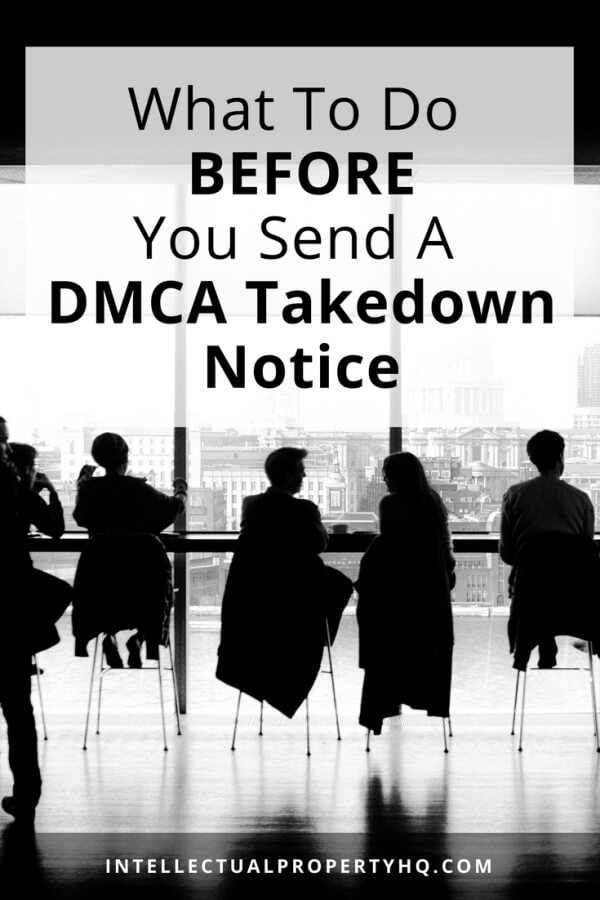
UPDATED February 22, 2019
We’ve had so much interested in DMCA Takedown Notices that we created a DMCA Takedown Notice Generator. You can still use the template linked below if you want to manually create your Takedown Notice, but the generator is easier to use, less manual work. Enjoy!
Sending a DMCA takedown notice might seem fairly straightforward once you have the template. But if you have a larger-scale company, there’s more to it than simply identifying your content on someone else’s site.
In the old Viacom v YouTube case, a studio’s marketing department published videos on social media networks–specifically, YouTube–and the legal department sent takedown notices for those same videos. The studio was accidentally paying their employees to fight each other.
This is actually a pretty common mistake. But if you have a cohesive strategy on where your content should and shouldn’t be going, and your departments understand what everyone else is doing, things can flow much more easily.
Send A DMCA Takedown Notice With Proper Business Practices
1. Make a list of your affiliates.
In the studios Jason works with, this is a conversation he always has. “Give me a list of your licensees. Let me know where your content should be. Let me know if this is a legitimate affiliate.”
He asks those questions before his team sends out DMCA notices, documents things, contacts attorneys, and speeds things up because he wants to make sure that what they’re doing is actually effective.
Make this easy for yourself and your employees by putting together a chart of where your content should be. It can be as simple as an Excel spreadsheet. Include:
-
- A concise description of the specific licensed content
-
- The name and URL of the licensee/affiliate
- Any additional notes about further restrictions (i.e. specific dates/times/URLs the content should or should not be shown)
Make the chart readily available to all employees–or at least to your marketing, content production, and legal personnel.

2. Integrate the list into your business processes.
Now you have an easily-accessible list of your affiliates? Great! Integrate it into the daily processes of these departments.
It’s a (theoretically) simple change; every time a new affiliate is added (or an old affiliate leaves), the marketing department MUST update the affiliate chart. Before sending a takedown notice, the legal department MUST check the affiliate chart.
If this seems like a hassle, think of it this way. If you’re sending DMCA notices to someone who’s marketing for you, what are you doing? You’re upsetting somebody who’s marketing for you, you’re creating bad business practices, and you’re creating a legal mess for yourself–should you go down that road.
It’s so much easier to have everyone update the chart when the affiliate roster changes and to have the legal department check the roster before sending a takedown notice.

3. Keep the lines of communication open and clear between your departments.
Jason consulted for technology companies years ago. When a company would call him in for the day, he’d spend part of the morning with the IT department, part of the morning with the marketing or PR department, have lunch, and then get everyone together in the same room.
You would be amazed at the number of times people had passed each other in the halls but never met, and were spending their workdays doing things that were completely counter-productive.
So the sooner you can open the lines of communication between your departments, the better off you’ll be.
This can take different forms in your company; maybe it looks like weekly meetings, a Slack group for your marketing and legal teams, or a company lunch twice a month where your marketing and legal departments eat tacos and catch each other up on affiliates and content squabbles.
Whatever works best for you and your employees–just make sure your marketing department, content production department, and legal department are communicating effectively.
P.S. You can’t send a DMCA Takedown Notice if your content isn’t registered with the US Copyright Office. To read our post on how to get registered, click here.
Image credit: Paul Bence//Samuel Zeller//Kelly Sikkema
